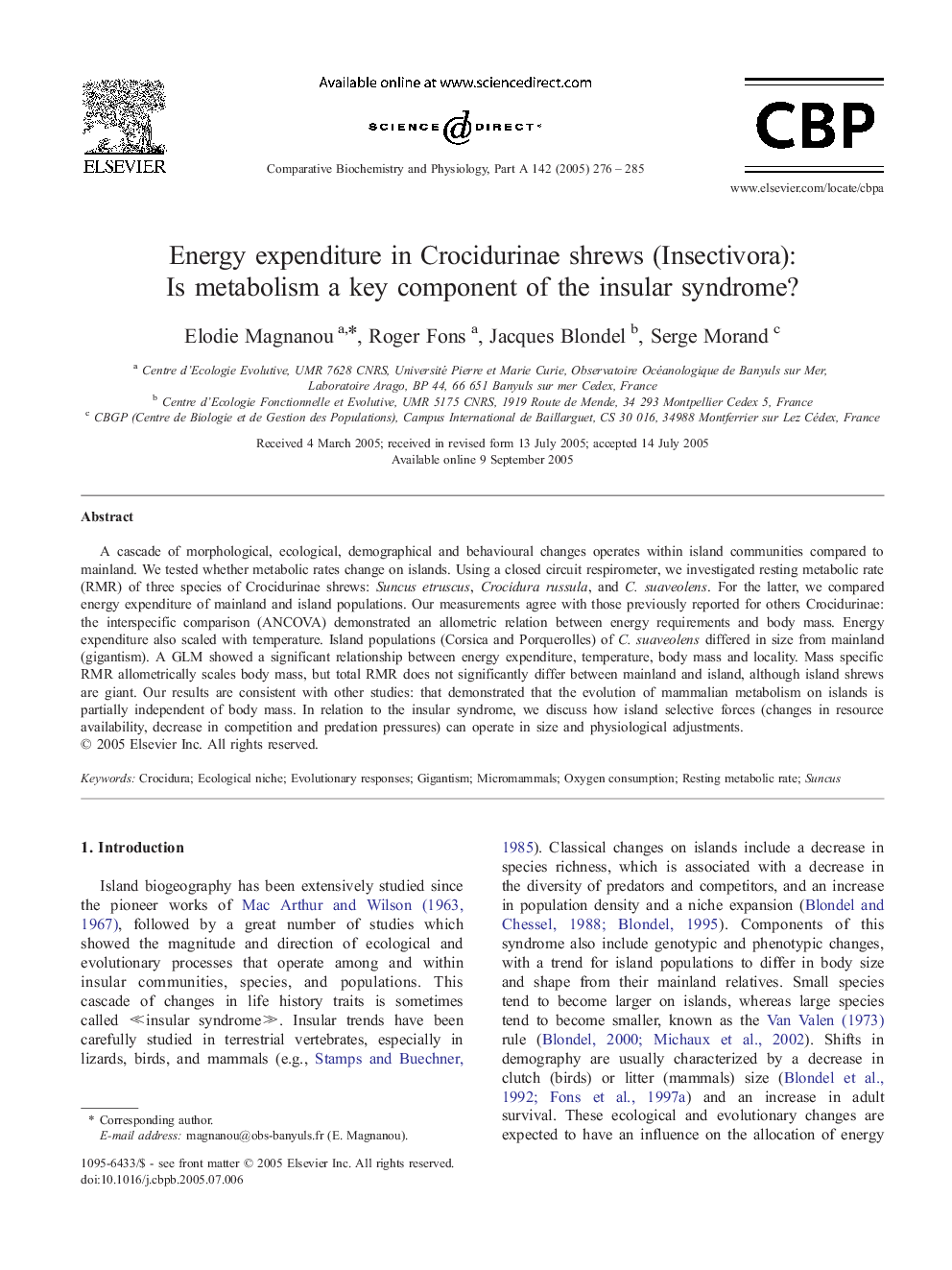| Article ID | Journal | Published Year | Pages | File Type |
|---|---|---|---|---|
| 10819309 | Comparative Biochemistry and Physiology Part A: Molecular & Integrative Physiology | 2005 | 10 Pages |
Abstract
A cascade of morphological, ecological, demographical and behavioural changes operates within island communities compared to mainland. We tested whether metabolic rates change on islands. Using a closed circuit respirometer, we investigated resting metabolic rate (RMR) of three species of Crocidurinae shrews: Suncus etruscus, Crocidura russula, and C. suaveolens. For the latter, we compared energy expenditure of mainland and island populations. Our measurements agree with those previously reported for others Crocidurinae: the interspecific comparison (ANCOVA) demonstrated an allometric relation between energy requirements and body mass. Energy expenditure also scaled with temperature. Island populations (Corsica and Porquerolles) of C. suaveolens differed in size from mainland (gigantism). A GLM showed a significant relationship between energy expenditure, temperature, body mass and locality. Mass specific RMR allometrically scales body mass, but total RMR does not significantly differ between mainland and island, although island shrews are giant. Our results are consistent with other studies: that demonstrated that the evolution of mammalian metabolism on islands is partially independent of body mass. In relation to the insular syndrome, we discuss how island selective forces (changes in resource availability, decrease in competition and predation pressures) can operate in size and physiological adjustments.
Keywords
Related Topics
Life Sciences
Biochemistry, Genetics and Molecular Biology
Biochemistry
Authors
Elodie Magnanou, Roger Fons, Jacques Blondel, Serge Morand,
